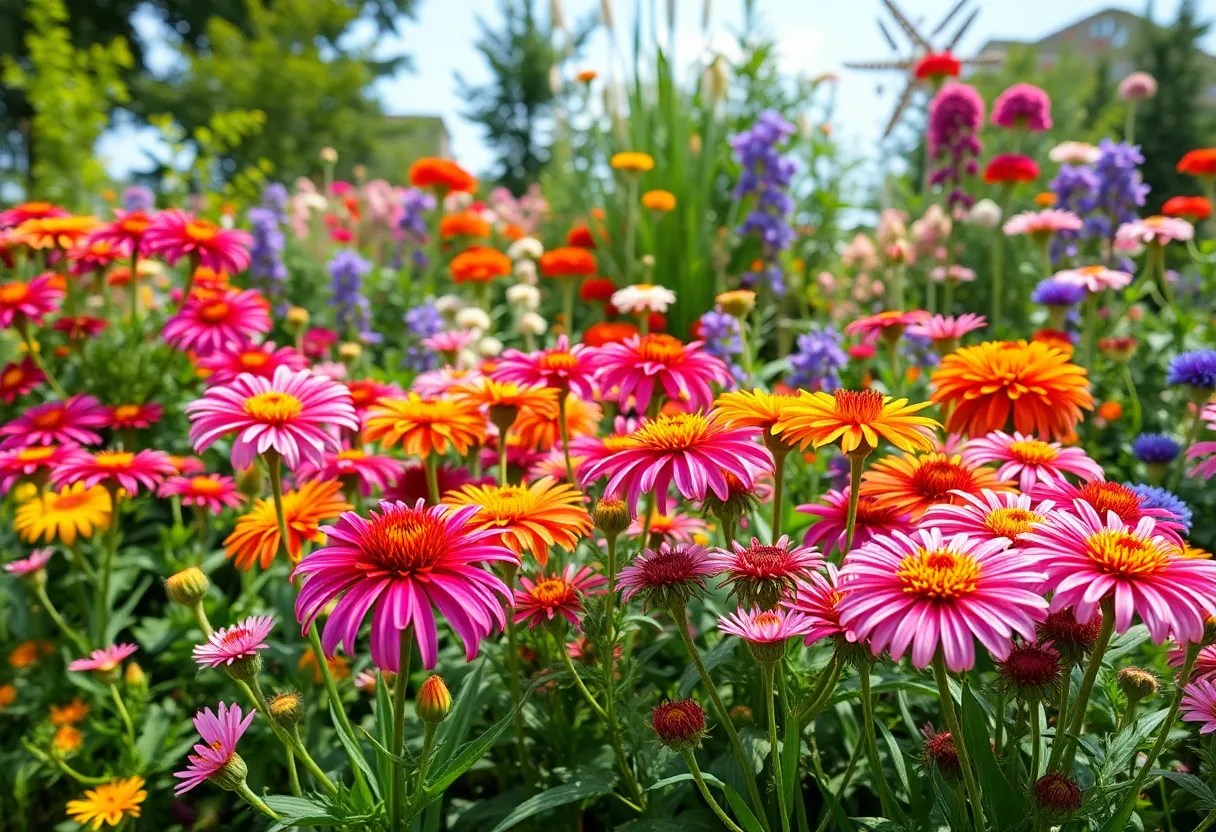10 Stunning Perennials That Bloom All Summer Long in Your New York Garden
Creating a vibrant, colorful garden in New York requires careful selection of perennials that are well-suited to the region’s climate. These plants should provide consistent blooms, thrive in local conditions, and require manageable maintenance. Focusing on resilient, adaptable species ensures your garden remains lively from early summer through fall.
1. Black-Eyed Susan (Rudbeckia hirta)
Black-Eyed Susan stands out as a quintessential perennial with its striking yellow petals and dark central cone. It is highly adaptable and thrives in full sun with well-drained soil. Its drought tolerance minimizes watering needs during dry spells. This plant flowers from mid-summer into fall, attracting pollinators such as butterflies, bees, and hummingbirds. Regular deadheading prolongs its flowering period, ensuring color persists for weeks. Its hardy nature makes it ideal for low-maintenance gardens that seek continuous summer blooms.
2. Purple Coneflower (Echinacea purpurea)
The Purple Coneflower features daisy-like flowers, with pinkish-purple petals and prominent spiky orange centers. It blooms from early summer to early fall, making it a cornerstone for multi-month visual interest. Preferring full sun and well-drained soil, it tolerates drought conditions and poor soils, reducing care requirements. Its attractivity to pollinators underscores its ecological value, and its resilience makes it suitable for diverse garden styles. Deadheading after flowering encourages reblooming, maintaining vibrant color throughout the season.
3. Daylilies (Hemerocallis)
Known for prolific, hardy growth, Daylilies bloom during late spring through mid to late summer. Each flower lasts approximately one day, but new blooms follow, creating a continual display. They thrive in full sun and adaptable soil, often requiring minimal upkeep. Reblooming cultivars, such as ‘Stella de Oro,’ extend flowering into the late summer and early fall. This versatility and robustness make Daylilies a popular choice to ensure a long-lasting floral display with minimal effort.
4. Coreopsis (Coreopsis verticillata)
Often called tickseed, Coreopsis produces vibrant yellow, gold, or pink flowers. It is a prolific bloomer, often nearly all summer, and tolerates poor, well-drained soils. Its drought resistance allows outdoor placement without extensive watering. Regular mid-summer pruning of seed heads stimulates additional flowering, sustaining visual interest. Its natural ease of growth and extended blooming window make it an essential perennial for summer gardens seeking continuous color.
5. Salvia (Salvia nemorosa)
The Salvia produces striking spikes of violet, blue, or pink flowers. It blooms from late spring to fall, provided deadheading is performed to encourage sustained flowering. Adaptable to full sun and well-drained soil, it tolerates dry conditions and low fertility areas. Its ecological importance is notable, as it attracts bees, butterflies, and hummingbirds. Its upright growth habit and vibrant spires add vertical interest to garden beds, complementing other summer-blooming perennials.
6. Bee Balm (Monarda didyma)
Bee Balm is recognized by its vivid, tubular, pom-pom-like flowers—often in red, magenta, or purple. Blooming primarily in mid-summer, it performs best in full sun to partial shade. Its preference for moist, well-drained soil makes it ideal for border planting or shaded garden areas with supplemental watering. It attracts hummingbirds, butterflies, and pollinators, enhancing biodiversity. Deadheading encourages repeat flowering, though it also self-seeds attractively, filling gaps and maintaining summer vibrance.
7. Phlox ‘David’ (Phlox paniculata ‘David’)
The cultivar Phlox ‘David’ features tall spikes of pure white flowers from mid to late summer. Its robust stems and fragrant blossoms lend a delicate yet dramatic touch. It thrives in full sun with well-drained soil, offering resistance to powdery mildew—a common concern among phlox varieties. The plant attracts butterflies and hummingbirds, making it both a visual and ecological enhancement. Regular deadheading extends bloom duration, ensuring a continuous display until late summer.
8. Catmint (Nepeta x faassenii)
Resilient and drought-tolerant, Catmint showcases purple flower spikes paired with gray-green foliage. Blooming from late spring to fall, it performs well in full sun with well-drained soil. Its compact habit makes it suitable for borders, rock gardens, and ground cover. Light pruning after initial flowering encourages secondary blooms, maximizing the season’s floral display. Its aromatic foliage also provides a fragrant addition to the garden, blending aesthetic appeal with aromatic benefits.
9. Speedwell (Veronica spicata)
Providing a splash of color across the summer months, Speedwell produces tall spikes of small star-shaped flowers in shades of purple, blue, pink, or white. Its bloom period spans from early to late summer, and deadheading promotes an extended flowering period. It prefers full sun and well-drained soil and can tolerate a range of garden conditions. Its upright form adds verticality, complementing other low-growing perennials and ground covers for a layered, vibrant garden composition.
10. Astilbe (Astilbe spp.)
Unlike the others, Astilbe excels in moist, shaded areas, offering tall, feathery plumes of white, pink, red, peach, or purple flowers in late spring to early summer. Its airy, mist-like flower structures contrast with denser foliage, creating visual interest. Ideal for shaded borders, woodland gardens, or moist beds, it requires consistent moisture and well-drained soil. Though not summer-blooming in full sun, its late-spring flowers add necessary diversity, and with proper placement, it can extend visual appeal into early summer.
Conclusion
Achieving a *vibrant, continuous summer display* in a New York garden hinges on selecting the right perennials. The ten plants highlighted above are well-suited to the region’s climate, offering extended blooms and ecological benefits. Proper planting, suitable soil preparation, and consistent care—such as deadheading and pruning—can maximize their flowering potential. Integrating these species ensures a garden that remains lively, colorful, and inviting from early summer through mid-fall, providing ongoing enjoyment and ecological harmony.
Author: STAFF HERE NEW YORK WRITER
The NEW YORK STAFF WRITER represents the experienced team at HERENewYork.com, your go-to source for actionable local news and information in New York, the five boroughs, and beyond. Specializing in "news you can use," we cover essential topics like product reviews for personal and business needs, local business directories, politics, real estate trends, neighborhood insights, and state news affecting the area—with deep expertise drawn from years of dedicated reporting and strong community input, including local press releases and business updates. We deliver top reporting on high-value events such as New York Fashion Week, Macy's Thanksgiving Day Parade, and Tribeca Film Festival. Our coverage extends to key organizations like the Greater New York Chamber of Commerce and United Way of New York, plus leading businesses in finance and media that power the local economy such as JPMorgan Chase, Goldman Sachs, and Bloomberg. As part of the broader HERE network, including HEREBuffalo.com, we provide comprehensive, credible insights into New York's dynamic landscape.





